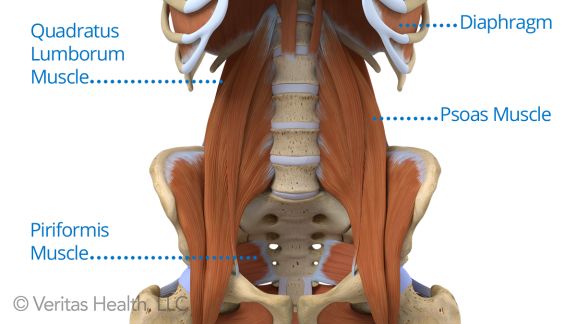
Nope, it’s not a food, not a game, not a constellation; the Psoas is an obscure muscle in the human body that is not really known to most people, somewhat difficult to locate, and typically ignored.
Corinne Brown

What Exactly Is The Psoas?
Nope, it’s not a food, not a game, not a constellation; the Psoas is an obscure muscle in the human body that is not really known to most people, somewhat difficult to locate, and typically ignored. This is unfortunate because you ignore the Psoas at your own peril. As the only muscle that connects the upper body to lower body, the Psoas has a huge impact on both overall flexibility and day-to-day functionality. The muscle attaches to the vertebrae of the lower spine, moves through the pelvis and then attaches to a tendon at the top of the femur. It also attaches to the diaphragm, and so it also plays a role in your breathing. As you can see, you can’t really get more “core” (pun intended!) than the Psoas.
In an ignored and weakened state, the Psoas can cause hip, back, and joint pain. Conversely, given appropriate attention, strengthening and stretching the Psoas can help alleviate many discomforts and aid in balance and realignment.
There are consequences to ignoring this unappreciated muscle. If you have ever experienced the following, they generally go hand in hand with a tight Psoas:
- Joint pain in back, legs, and hips
- Walking with discomfort
- Hips locking
- Poor posture
- Trouble sleeping
- Lack of good energy when exercising
- Difficulty breathing
What To Do About It
If you are suffering from any of the above symptoms, your Psoas may be to blame. To address these issues you should look to do exercises and stretches that create mobility and core strength. Beyond exercise, it’s also important to keep your weight in check, because when your abdominals bulge the curve affects the Psoas, causing many of the discomforts I mentioned above.
Personally, It wasn’t until my hip surgery that I really started concentrating on deep Psoas training which incorporated, planks, pelvic lifts, proper ab work, deep stretching and balance work. I can’t stress enough what these movements have done to improve my overall fitness.
Now that you know about my obsession with the Psoas, you probably won’t be surprised to learn that many of my classes incorporate specific movements that can improve its strength and flexibility. If you’re interested in strengthening yours, I suggest trying any (or all) of my Ab Attack, Upper Cut Core, Cardio Strength, Essential Stretch, Rebounding and Strength Challenge classes. You’ll find that Psoas-friendly movements are incorporated in almost all of my classes. And I’m not alone. We have many incredible instructors, trainers and fitness professionals that can help you get rid of the issues associated with a weakened Psoas.
And remember – the key to Psoas-success (and all fitness in general) is to remain consistent with your eating, to exercise regularly, and to incorporate variation into your workouts.
Sponsored Links
About the Author

Corinne Brown
Corinne Brown is a Fitness Professional with over 30 years experience. She is the co-founder and co-owner of Fitness Incentive.


